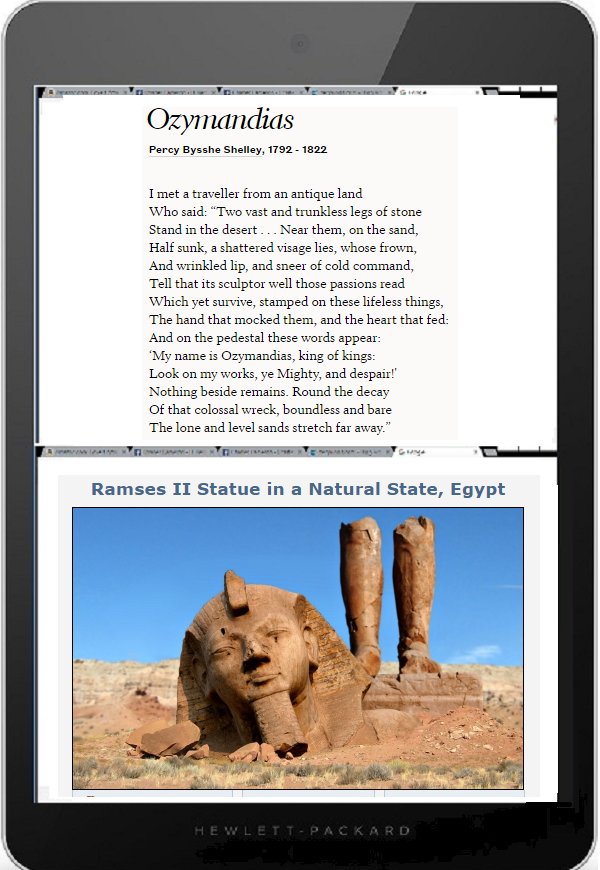Triangulation: Hoboken, Ramesses II, Ozymandias
[ by Charles Cameron — from sand he came, to sand he shall return ]
.
The two images below — the upper image from Wm Benzon‘s New Savanna blog today, the lower from Wikipedia‘s article on Ramesses II —
— between them evoke Percy Bysshe Shelley‘s celebrated poem Ozymandias.
I was going to call Shelley’s poem “longstanding” — but given the erosion to which both images and the poem itself testify, it seems plausible that Shelley’s poem — like Shelley himself — may soon be dust.
**
Mark you, if I were DoubleQuoting the poem, I’d do it thus:
More details fit — the shattered visage, the trunkless legs of stone — but the image is by the same token further from Benzon’s photo, my starting point for this now quadrangular voyage.
**
Sources:
Wikipedia, Pi-Ramesses Wm Benzon, Here stood a pillar of the community PB Shelley, Ozymandias Dave Foreman, The Anthropocene and Ozymandias
To be exact, the lower image in the second DoubleQuote came from the DeskTop Nexus site, but a version of Foreman’s article is where I found it, and I tracked it to Foreman’s original pamphlet from there.





August 11th, 2016 at 7:59 pm
Oh Charles, how your mind do wonder in most wondrous climes!
August 12th, 2016 at 12:57 am
Wm:
.
Indeed. Wanderlust, wonderlust, baby!
August 12th, 2016 at 1:48 pm
Shelley’s poem will last as long as the English language lasts.
August 12th, 2016 at 3:54 pm
It is indeed a fine piece of work, Michael — but Chaucer was unreadable to me when I was a boy, and Shakespeare has reached the point where the Oregon Shakespeare Festival has a Shakespeare translation project:
I’m not sure, but as we decolonialize and globalize culture (world music, eg), I suspect that English adds national streams from Barbados, Mumbai, Brooklyn, Adelaide, Louisiana and hiphop to its already rich mix, and that a Shakespeare using the spectrum of the language available in London today as keenly as Wm S used the spectrum available in London in his own day would appear no less neologistic and extraordinary than his older namesake. And then throw in an oligarch’ daughter speaking Russian, as Katherine speaks French in Henry V III.2, explaining as Katherine does, “I cannot speak your England”…
.
Hey, I was interested to note that SparkNotes, which runs a “modern text” translation side by side with the original in its “No Fear Shakespeare” series, gives us:
as its modern version of Shakespeare’s “Alice, tu as été en Angleterre, et tu parles bien le langage.”
.
How long before Shelley needs a crib to help us understand him? You may say that by then the language is no longer English — neo-Old-English perhaps? — but it’ll be the melange of a language the Anglophones speak..
August 13th, 2016 at 2:56 am
From Bill Benzon:
.